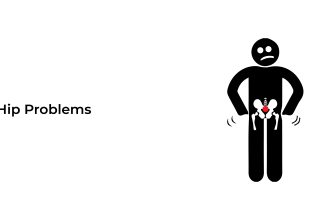Jardiance are frequently referred to as sodium-glucose co-transport 2 inhibitors (SGLT2 inhibitors). In addition to diet and exercise, it is approved for treating type 2 diabetes. Adult patients with type 2 diabetes can also use it to lower their chance of dying from cardiovascular disease.
How does it work?
When the kidneys function normally, urine is produced; however, Jardiance prevents the kidneys from reabsorbing glucose. The kidneys return some substances to the bloodstream or the body because they are vital for the body.
Jardiance prevents the kidney’s capacity to reabsorb glucose into the bloodstream. Consequently, there is increased excretion of glucose in the urine, or you are urinating more glucose than you need to, eventually improving glycemic or controlling glucose. The usual starting dose for someone taking Jardiance with diabetes is 10 milligrams once daily. It is typically advised to take this medication in the morning with or without food, and those who need more glycemic control can up their dosage to 25 mg daily.
How to use Jardiance?
You must follow the dose instructions since the doctor will carefully assess your medical and physical condition to decide the appropriate dosage for you. Do not skip a dose of your medication because doing so could worsen your condition’s symptoms. To get your body habituated to taking medication, establish a routine that includes taking it at set times and in specified ways.
As your doctor prescribes, this medication is mostly taken once daily, ideally in the morning. It is appropriate to take this medication with food or water. Before taking medicine, avoid breaking and crushing it. Take medicine all at once. Chewing the medication releases the entire dose at once, which may cause harmful effects. Ask your doctor for instructions if you are taking these medications via a tube straight into your stomach. Avoid drinking alcohol since it can counteract the therapeutic effects of medicines and raise the likelihood of adverse consequences. Avoid using it unnecessarily or taking too much of it.
Side Effects:
Some of the common side effects include:
- Hypoglycemia occurs when a patient’s blood sugar levels fall dangerously low. This condition was seen in 0.4% of the population. When combined with another drug, such as metformin, insulin, or another anti-diabetic medication, the percentage ranged from 1.2 percent to 28.4 percent, which is quite significant. If they were taking Jardiance alone, they would be on monotherapy. So the patient must exercise caution.
- The medication can result in excessive urination, as it is reported by 3.2 to 3.4 percent of users of Jardiance along with other medications prescribed by their doctors. The main reason behind this is the function of this drug; it makes a person urinate more glucose than usual.
- Jardiance has also been linked to urinary tract infections, which occur in 7.6 to 9.3 percent of patients. If you look at the entire patient group, the number for those 75 and older grew dramatically to between 15.1 and 15.7 percent. Consequently, older individuals over 75 are more prone to experience urinary tract infections if they use Jardiance.
- Approximately 5.4 percent to 6.4 percent of the population also have female genital infections.
Some other side effects that have been reported include
- Nausea
- Hypercholesterolemia is an increase in your cholesterol levels
- Dehydration
- Polydipsia is an increase in your thirst. You always feel thirsty.
- Jardiance is associated with arthralgia, which is joint pains.
- Some less common but potentially severe side effects include diabetic ketoacidosis, a buildup of ketones up to dangerous levels in your body. For this reason, Jardiance is neither approved nor recommended for type 1 diabetics. Because type 1 diabetics have a greater probability or risk of developing ketoacidosis, signs of ketoacidosis that you look out for include symptoms such as difficulty breathing, nausea, vomiting, abdominal pain, confusion, and sometimes unusual fatigue or sleepiness.
Precautions:
Now take a look at some precautions and some warnings:
The first and most crucial condition is nicotine fascitis, Fournier’s gangrene. Therefore, Jardiance and other drugs in that class have been linked to necrotizing fasciitis, a dangerous but highly uncommon illness. The simplest definition of nicotine facilities is “flesh-eating illness,” however, this condition is highly unusual. However, while taking Jardiance or any other medication in that class, you should seek medical assistance immediately if you experience discomfort, swelling, or fever in the vaginal or perineal area.
In such cases, Jardiance is typically stopped, and a course of antibiotics and other treatments are initiated to treat the problem. Because Jardiance has a history of causing acute kidney injury and occasionally renal impairment, patients with kidney disease should use it with the utmost caution, if at all. In those who are predisposed to it already or who have a higher risk of getting it in the first place. Therefore, to ensure that your kidney numbers fall within the ranges appropriate to take Jardiance, your doctor will usually examine some of them, such as your creatinine clearance and glomerular filtration rate, or GFR.
References:
- https://www.jardiance.com/type-2-diabetes/taking-jardiance/#:~:text=JARDIANCE%20is%20a%20once%2Ddaily,exactly%20as%20your%20doctor%20prescribes
- https://www.webmd.com/drugs/2/drug-166762/jardiance-oral/details
- https://www.healthline.com/health/drugs/jardiance







